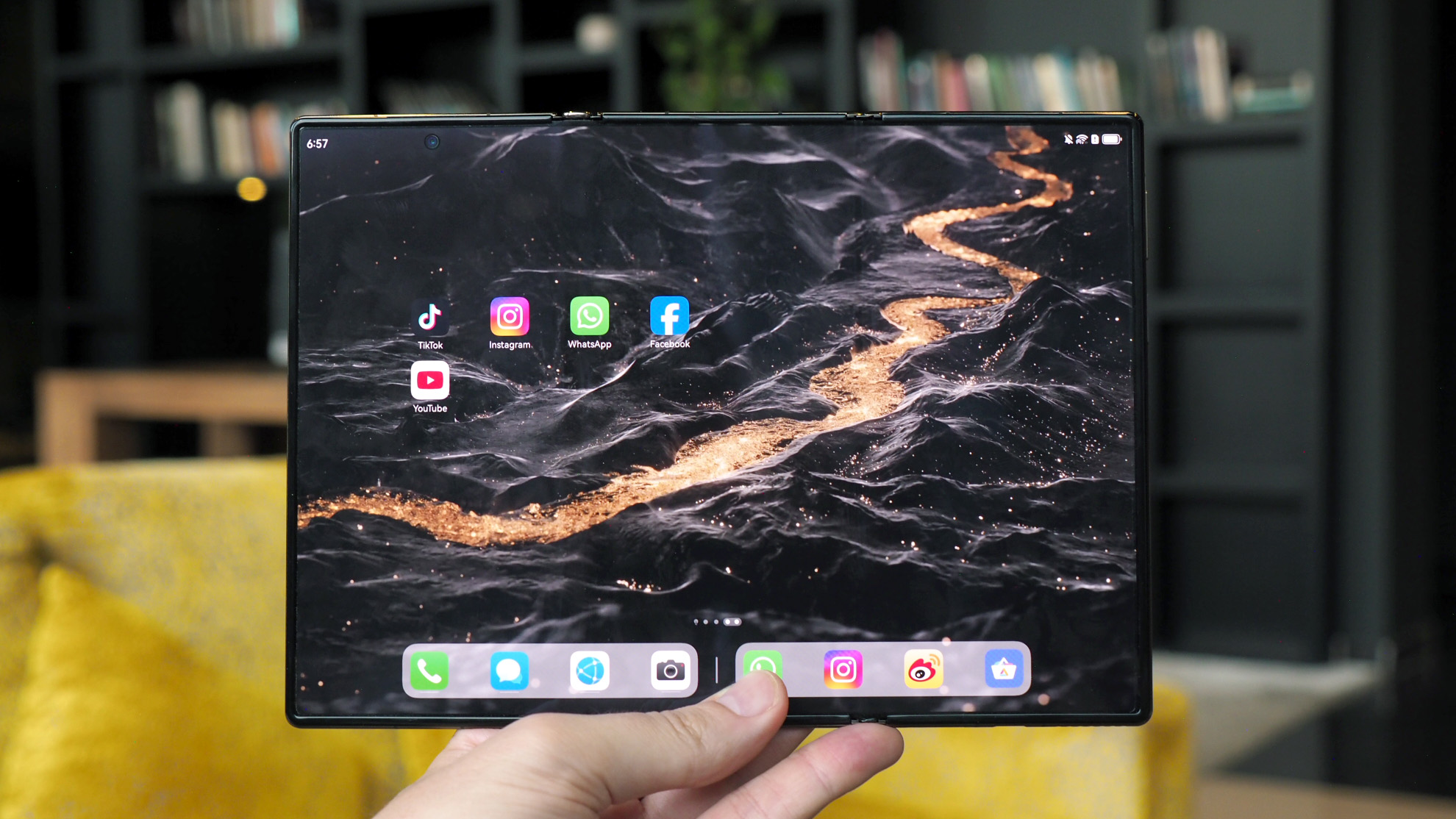
Having tested the best folding phones for many years now, I feel as though 2024 has been a tipping point in getting foldables to a no-compromise proposition – just as I said of the Google Pixel 9 Pro Fold, which exceeded my expectations and has become my daily driver that's now always in my pocket.
So when the opportunity to get ahold of the brand new Huawei Mate XT – a world-first innovation, thanks to its triple-fold design – I jumped at the chance to see the future of folding phones in action. Huawei's 'Ultimate Design' device (as written on its rear) is a deeply impressive bit of kit – one that's almost confounding in its brilliance.
Indeed, with Samsung's Galaxy Z Fold 6 altogether so similar to its predecessor, and Google having only just elevated its conventional folding phone prospects, it's clear that Huawei's research and development could teach the other big dogs a new trick or two in making the best Android phones of the future.
Sure, the Mate XT isn't going to be a viable product for many people right now – not least on account of its cost – but it is a wonderful glimpse into the future's potential of the format. Here are five key points about Huawei's triple-fold innovation, as based on my time using the device:
1. It can fold multiple ways
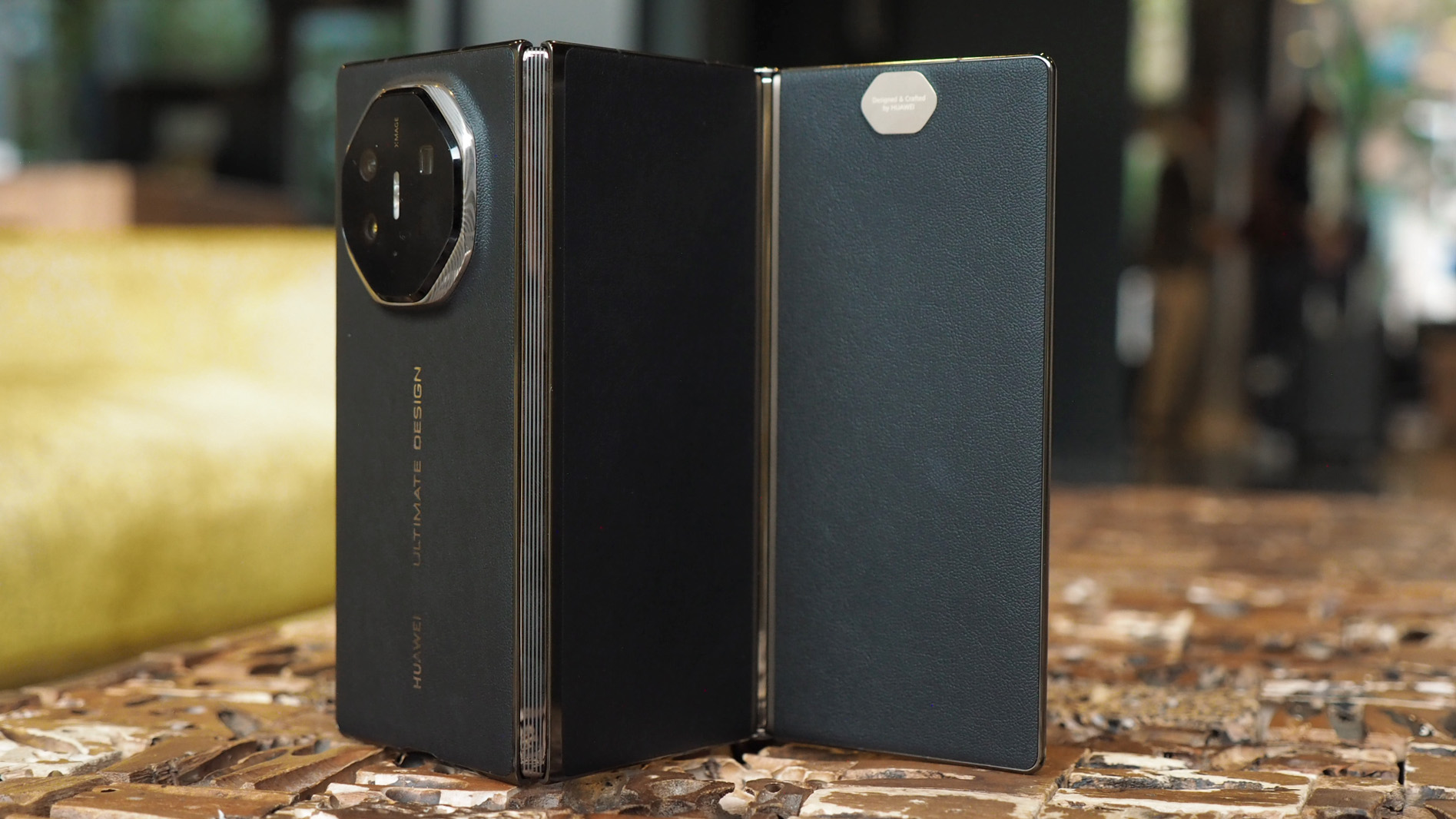
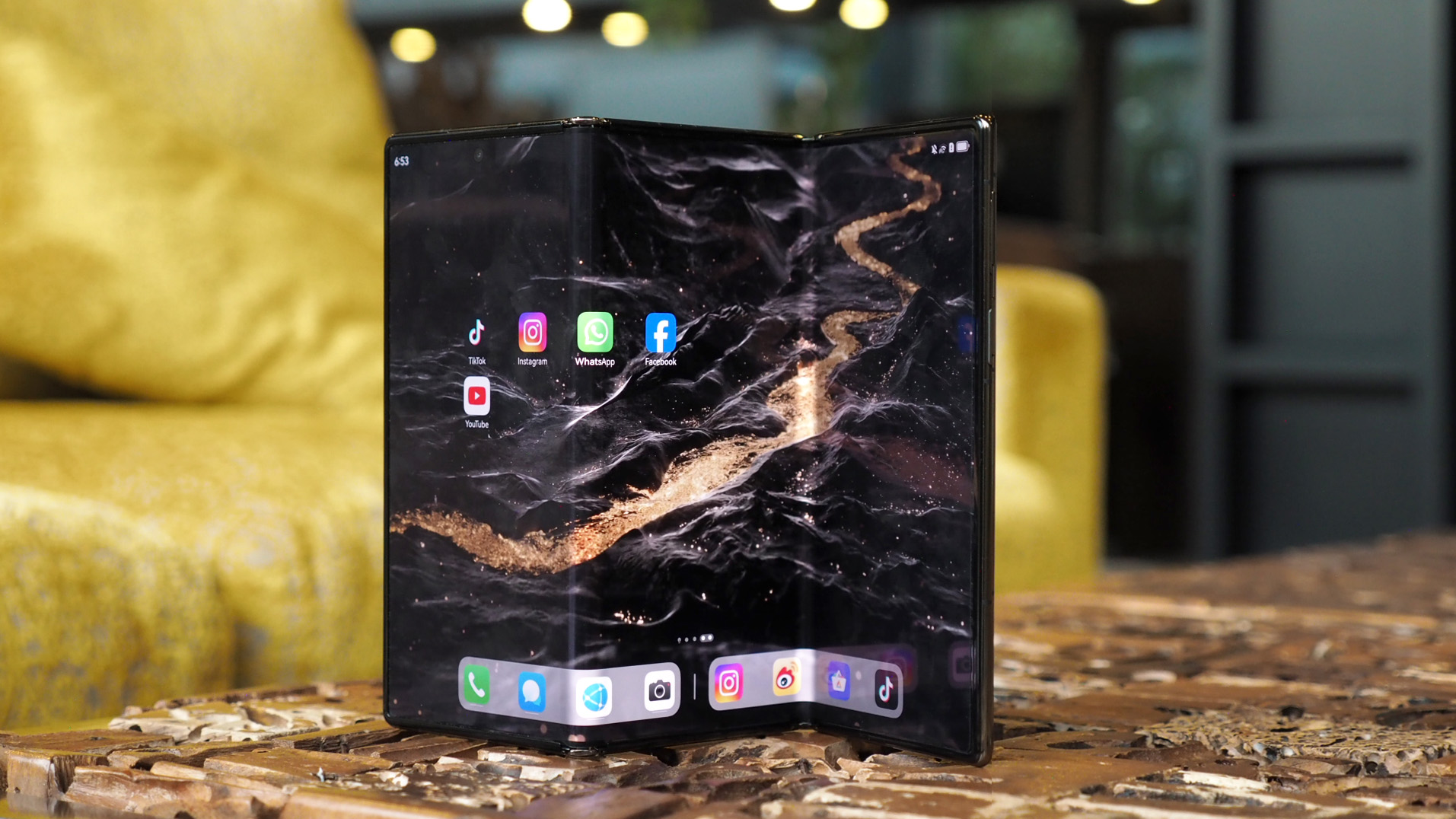
Folding phones have settled on two designs by and large: the clamshell-like form, as per the Motorola Razr 50 Ultra (which I think is best of that type); and the book-like form, as per the Honor Magic V3 (the thinnest of the bunch right now) and others. Huawei's take in the Mate XT is like an evolution of the latter form.
The Mate XT all folded up looks like a reasonably conventional 6.4-inch phone to me. Unfold it by the first hinge, however, and you get an XL display. But then there's its magic trick: a second hinge means it can be unfolded again and deliver an XXL display, which is a massive 10.2-inches across the diagonal.
As I see it: you'd never need a tablet again. That kind of scale would be ideal for long journeys when you want to watch, say, Netflix's latest no.1 movie, or various other types of media. The typical 'crease' – of which there are two here, of course – is subtle, akin to the OnePlus Open, and front-on I couldn't notice them. Add 120Hz variable refresh rate and oodles of brightness and this giant screen in your pocket is unlike anything else I've ever seen in such a device.
2. The hinges are impressive
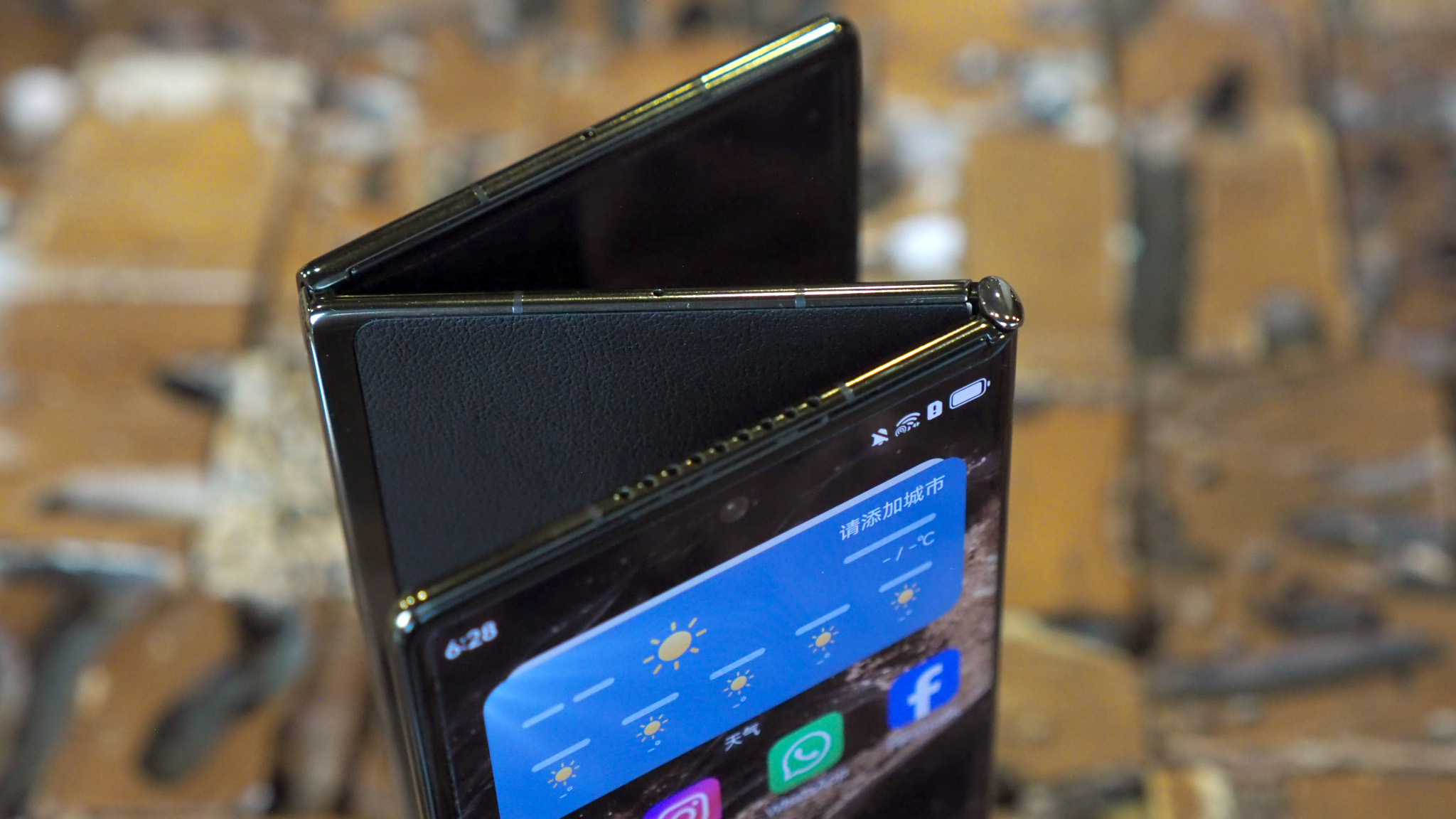
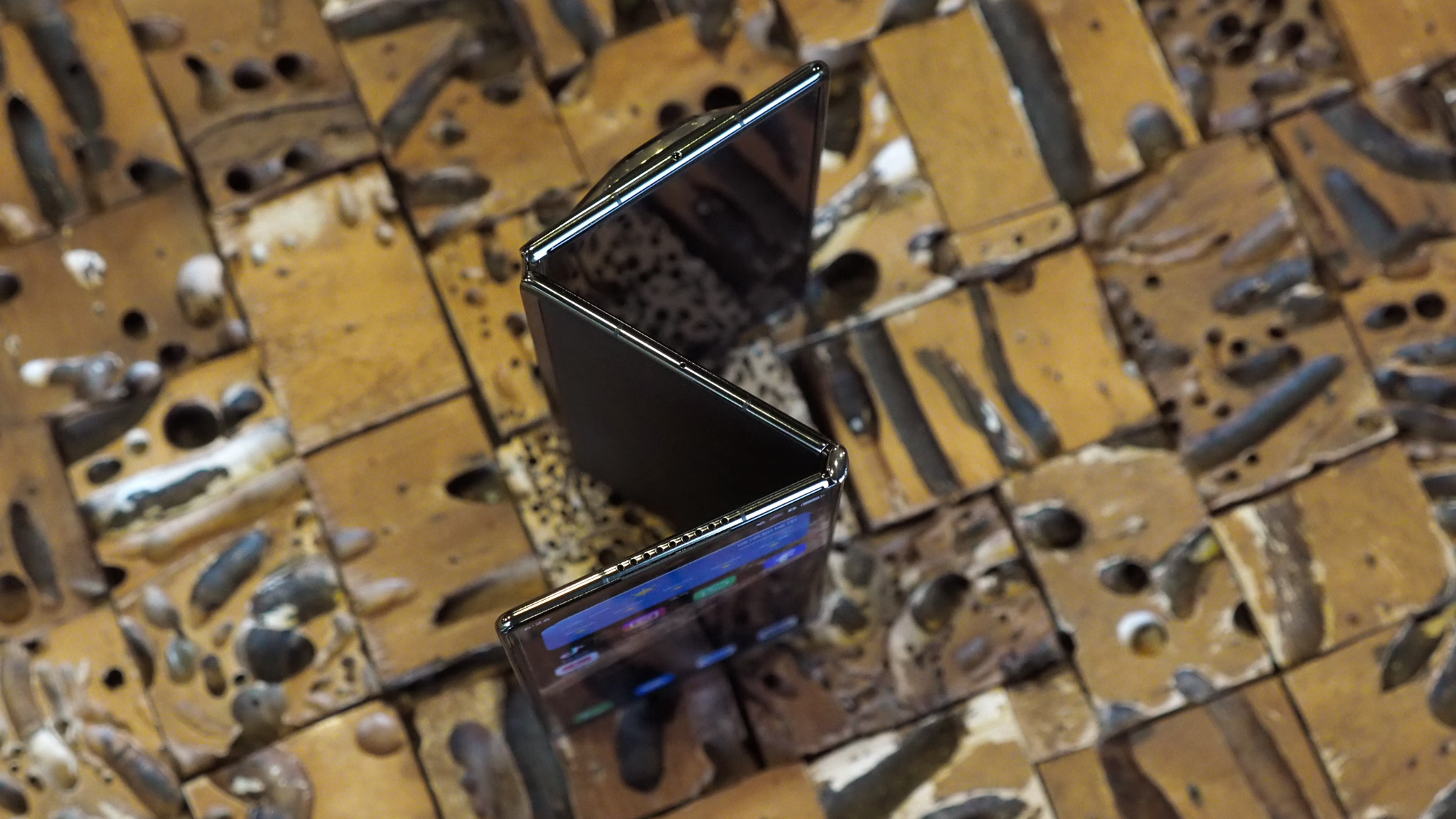
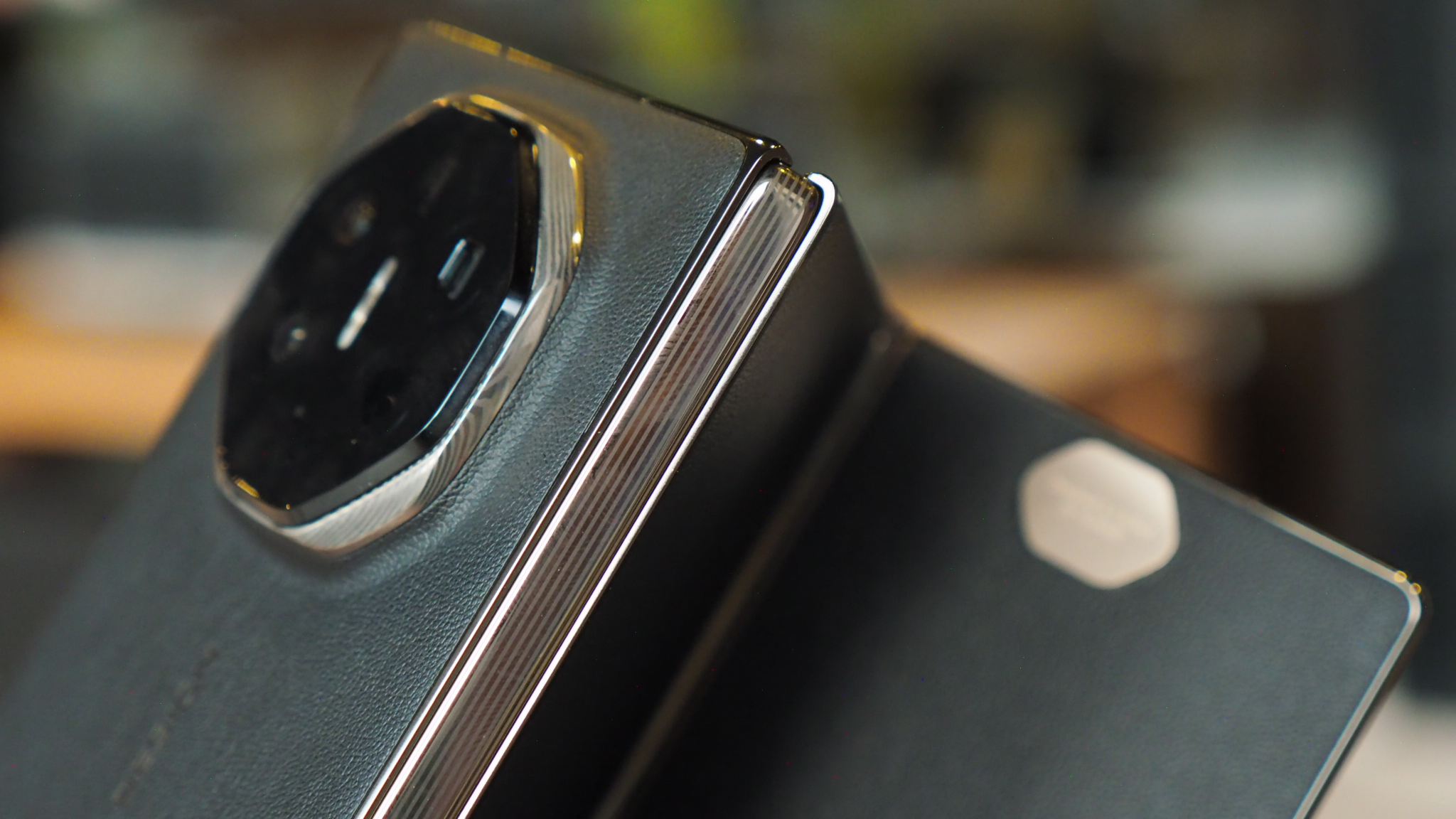
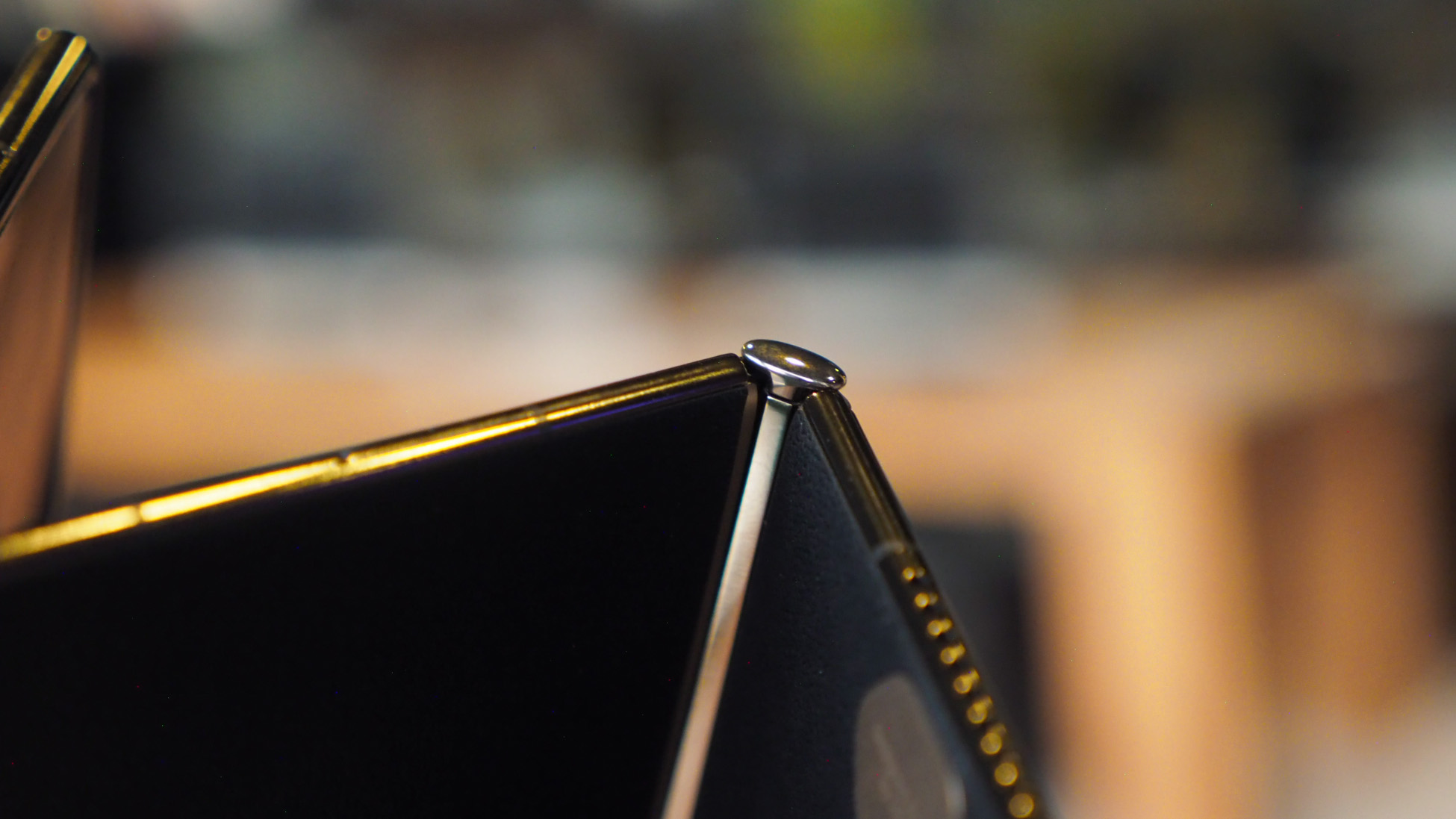
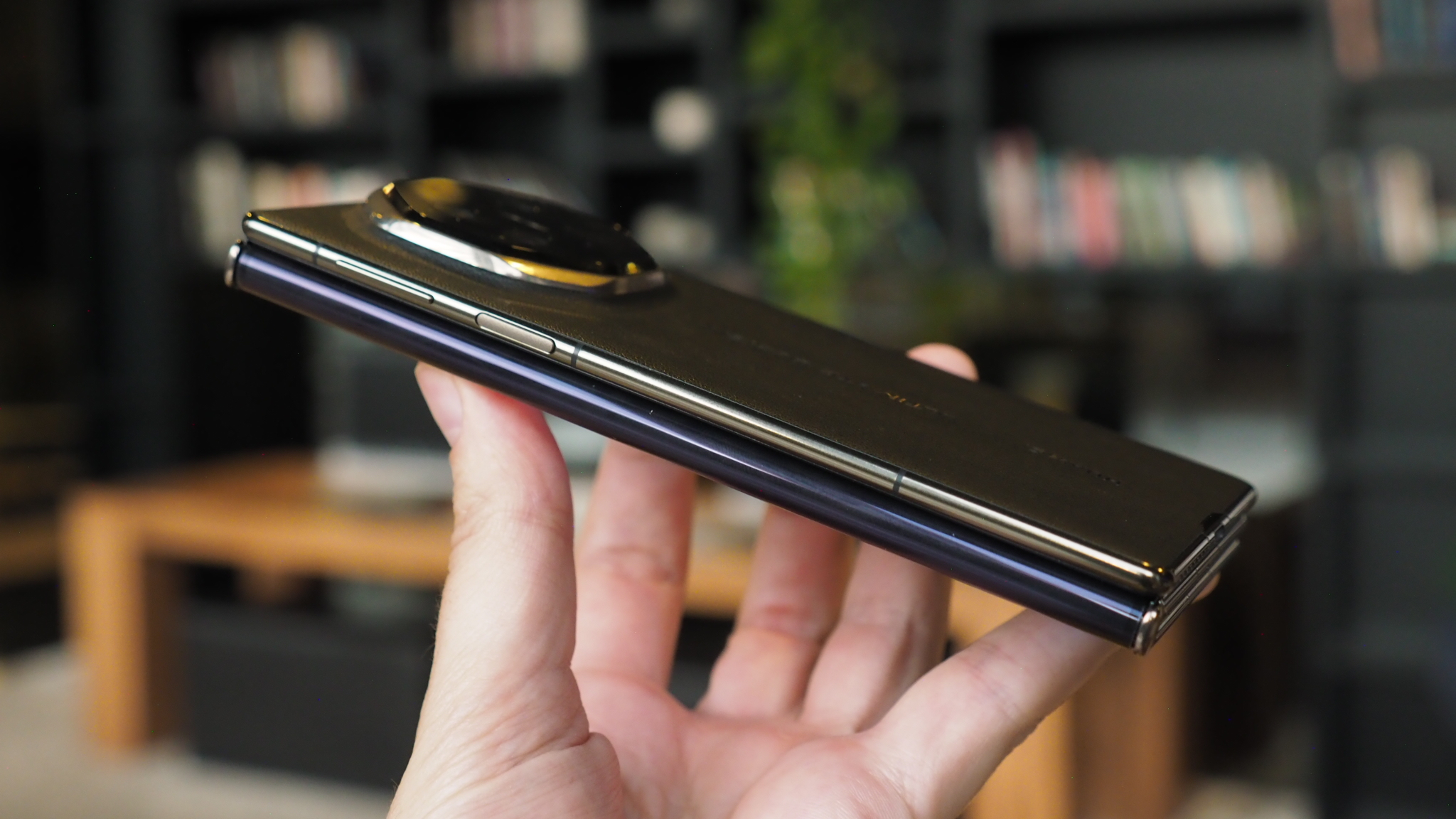
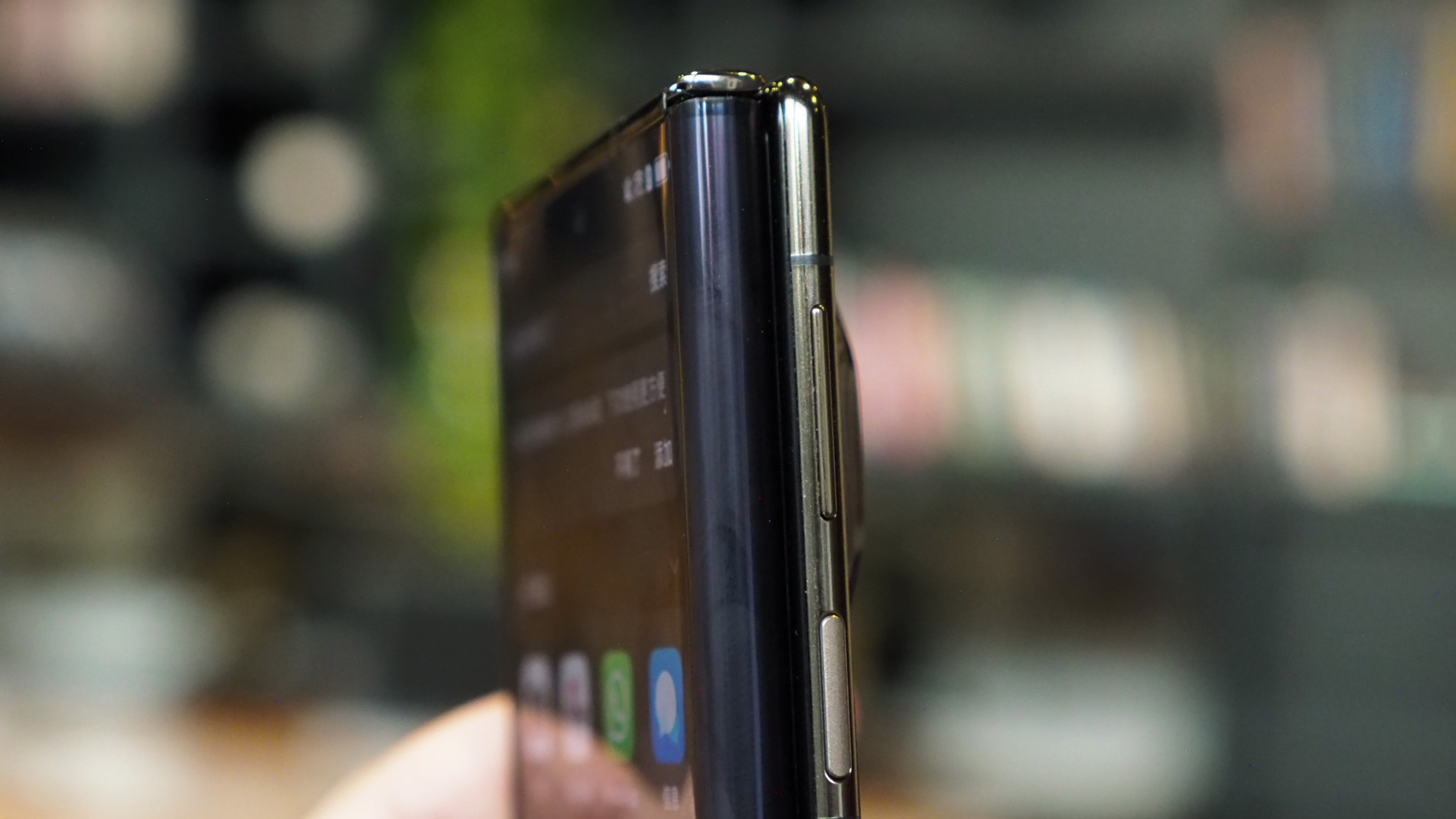
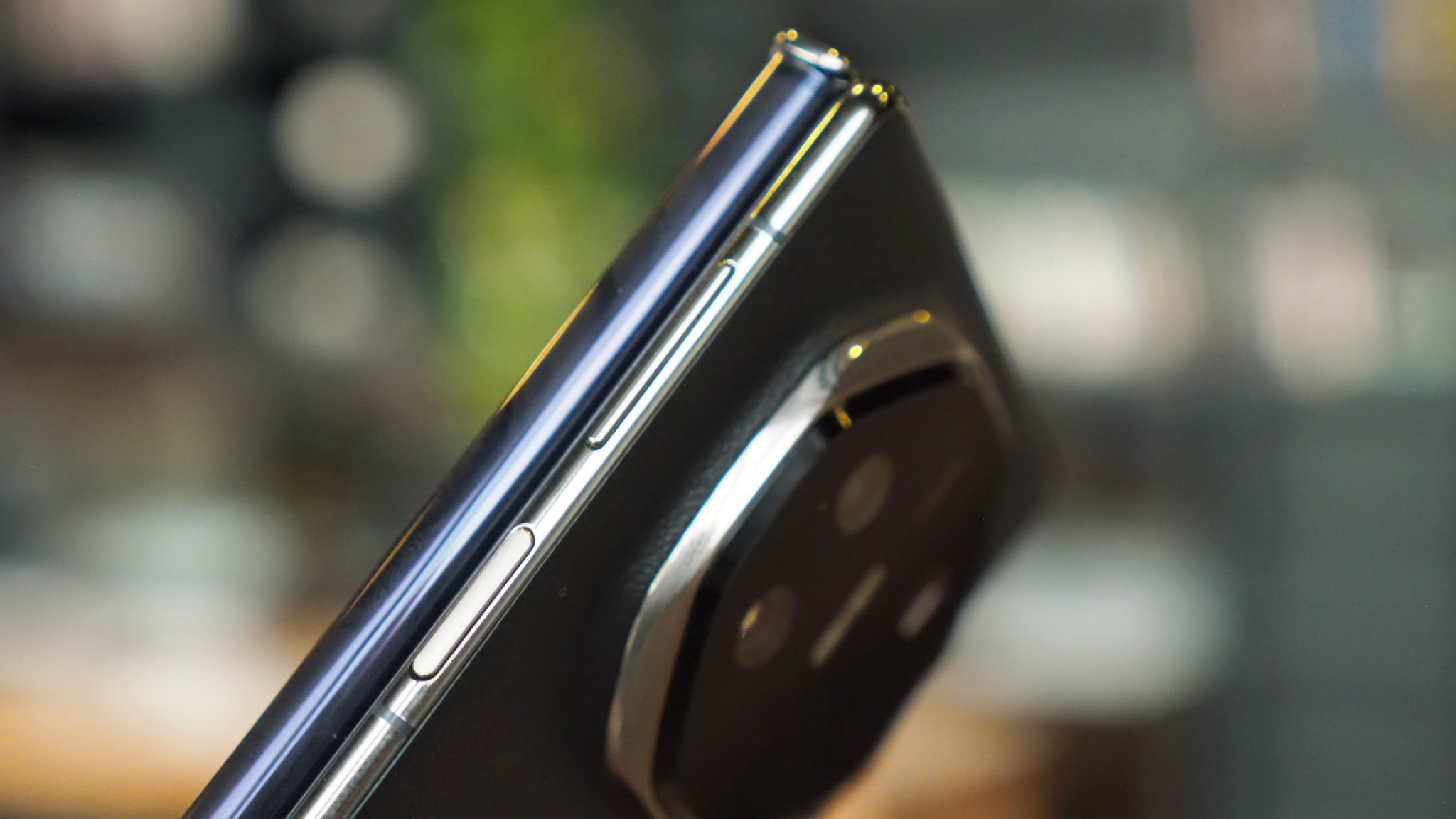
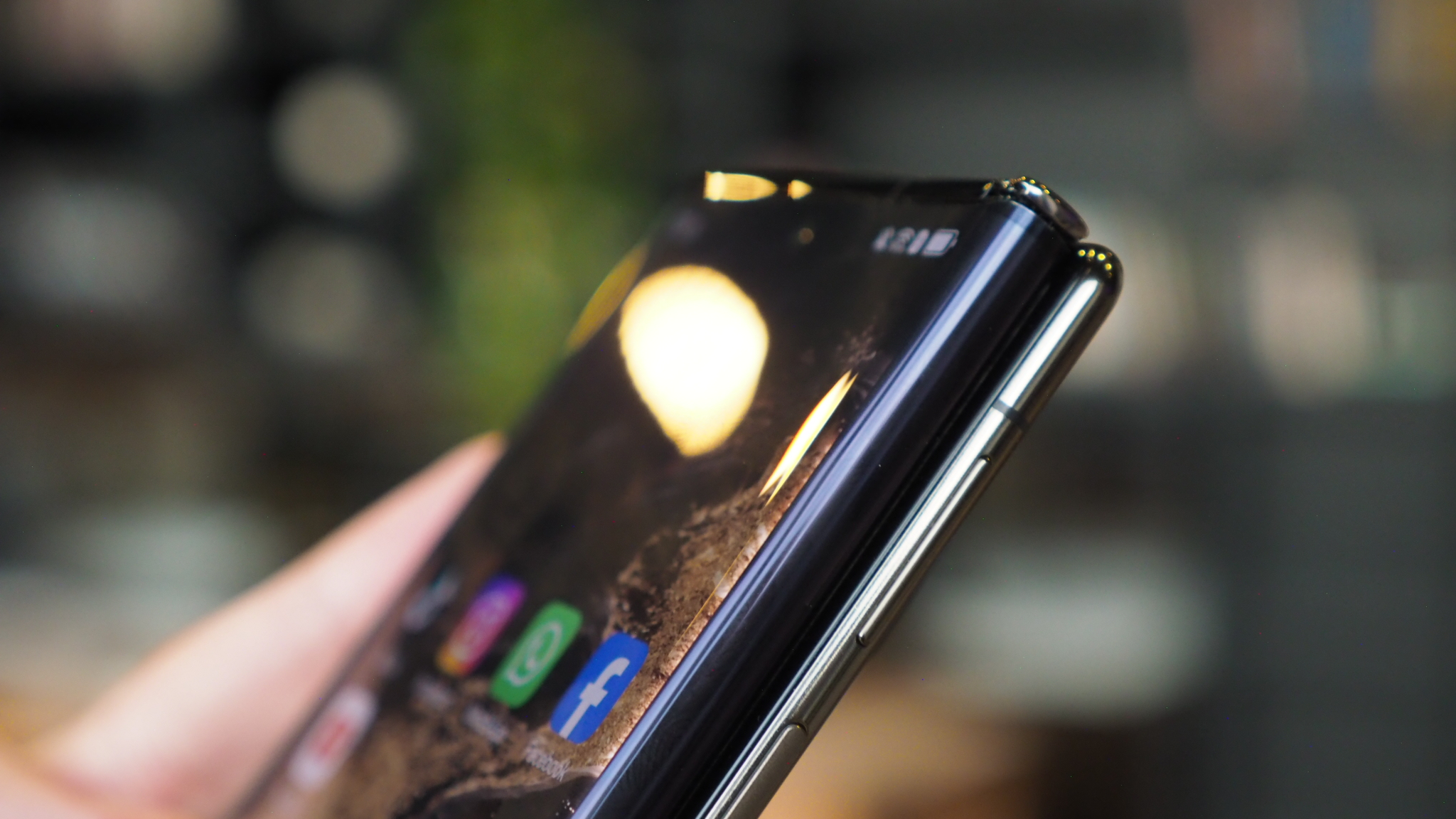
I'd assumed before seeing the Mate XT that its build quality was going to be up for question. But that's really not the case: I found the hinge mechanisms really robust, there's no 'crunchiness' to their operation (which I've seen and felt with some foldables of the past), and the resistance feels just right – it's not too loose, not too stiff, enabling adjustment of both as you wish, concertina style.
Huawei has really nailed that aspect of the Mate XT's mechanical design, which is clearly integral to a product such as this. The displays around the hinges aren't obstructed either, which means no disruption of the screen's flow. That's testament to how advanced this product is – I can't even imagine how many variants were created in pursuing this final outcome.
It's not just the hinges that impress, though, the overall handset's build quality is of a very high calibre indeed. How so much screen can be packed into a sub-300g device isn't to be understated – that's not a huge amount more than the 257g Google Pixel 9 Pro Fold – and the choice of metal frame and textured material cladding is right on point.
3. Battery technology is a step ahead
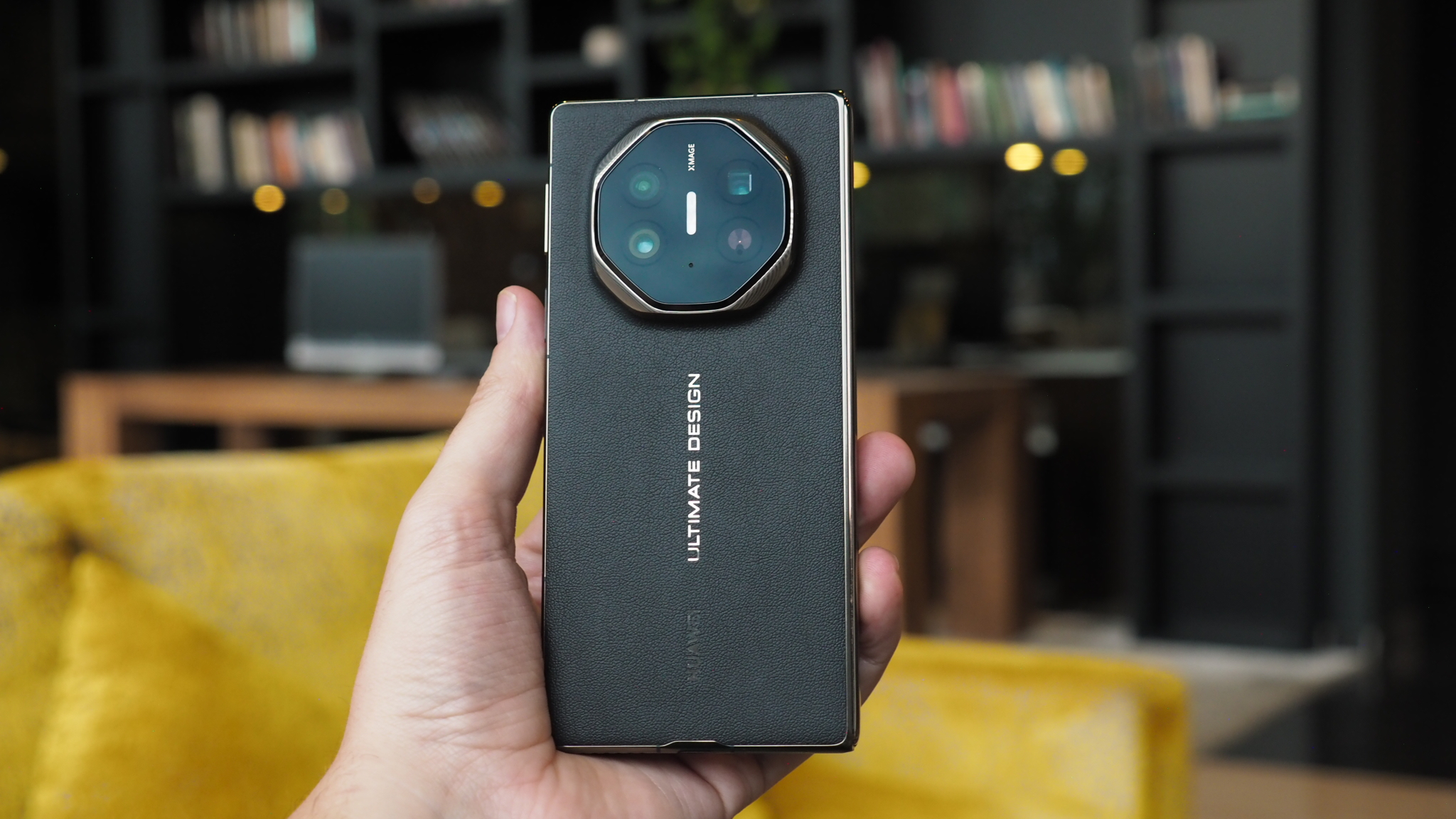
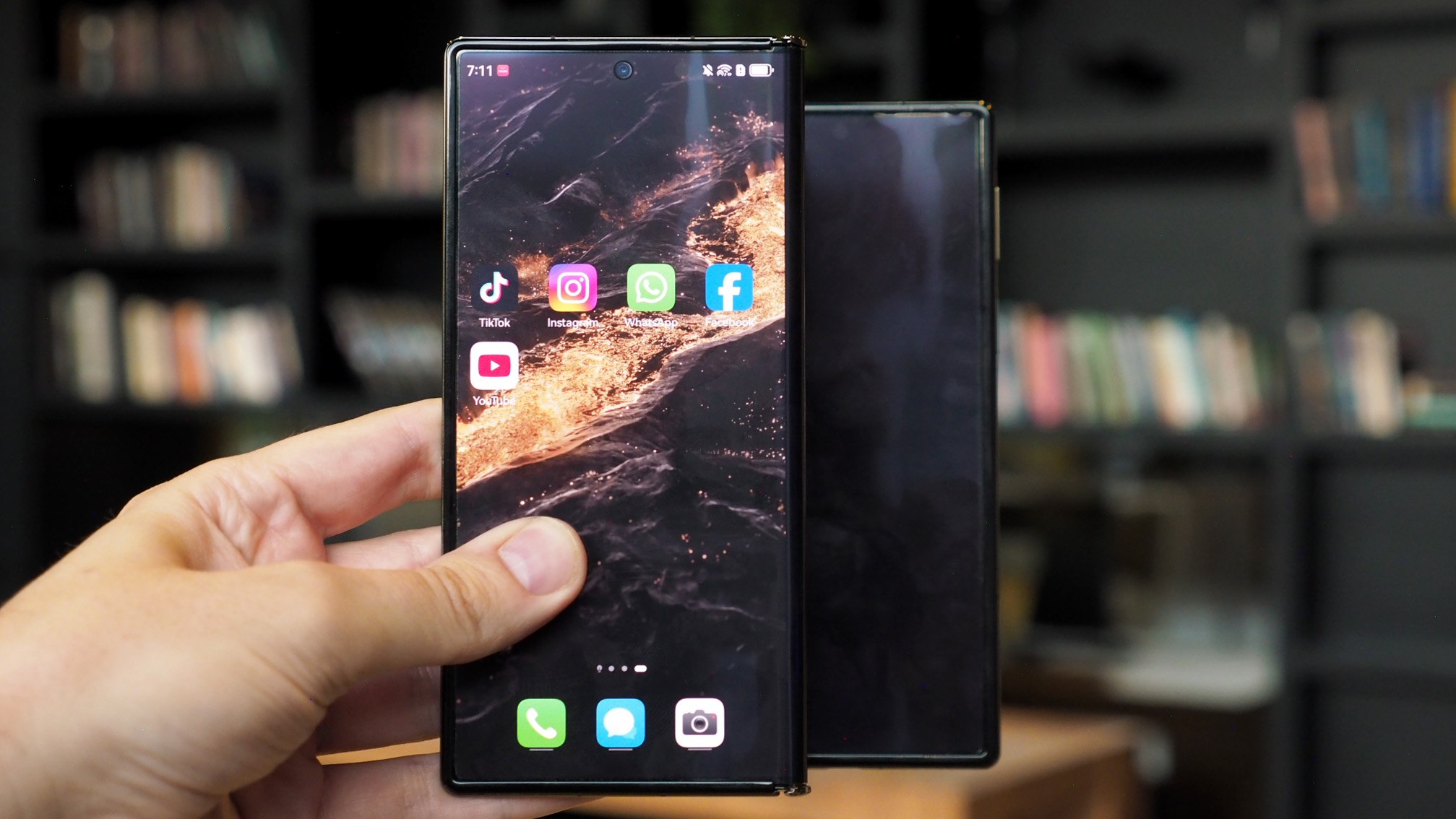
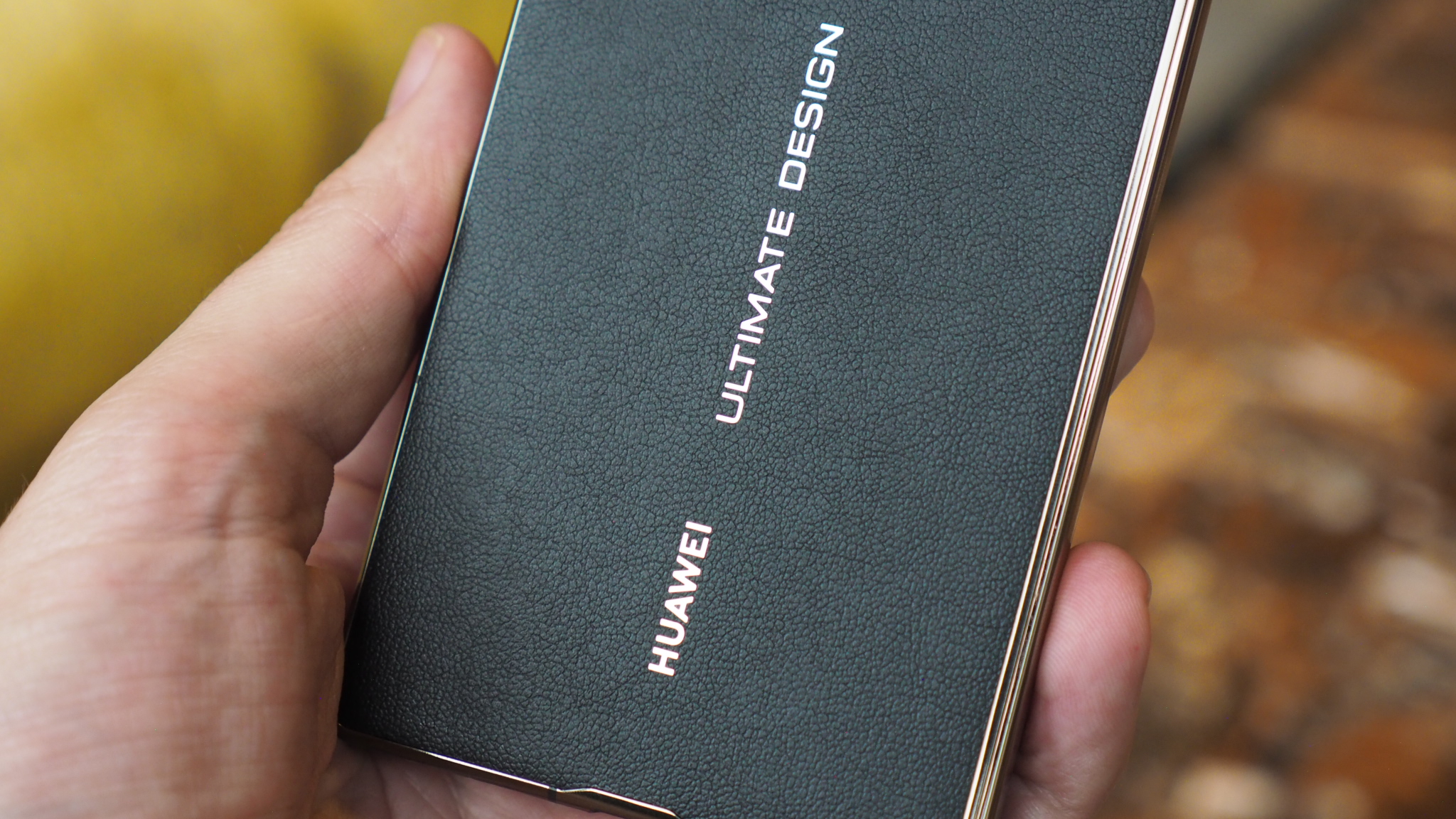
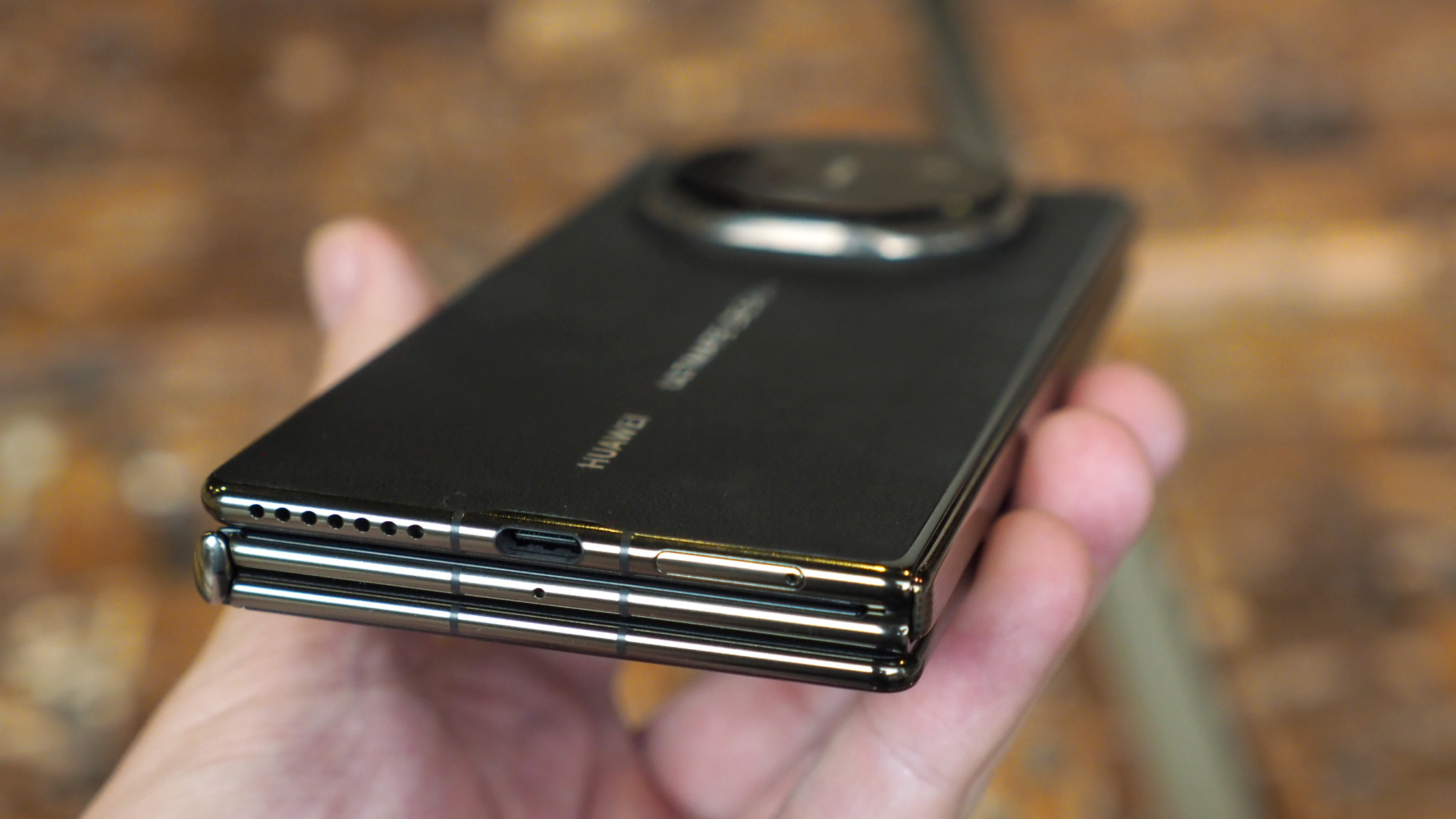
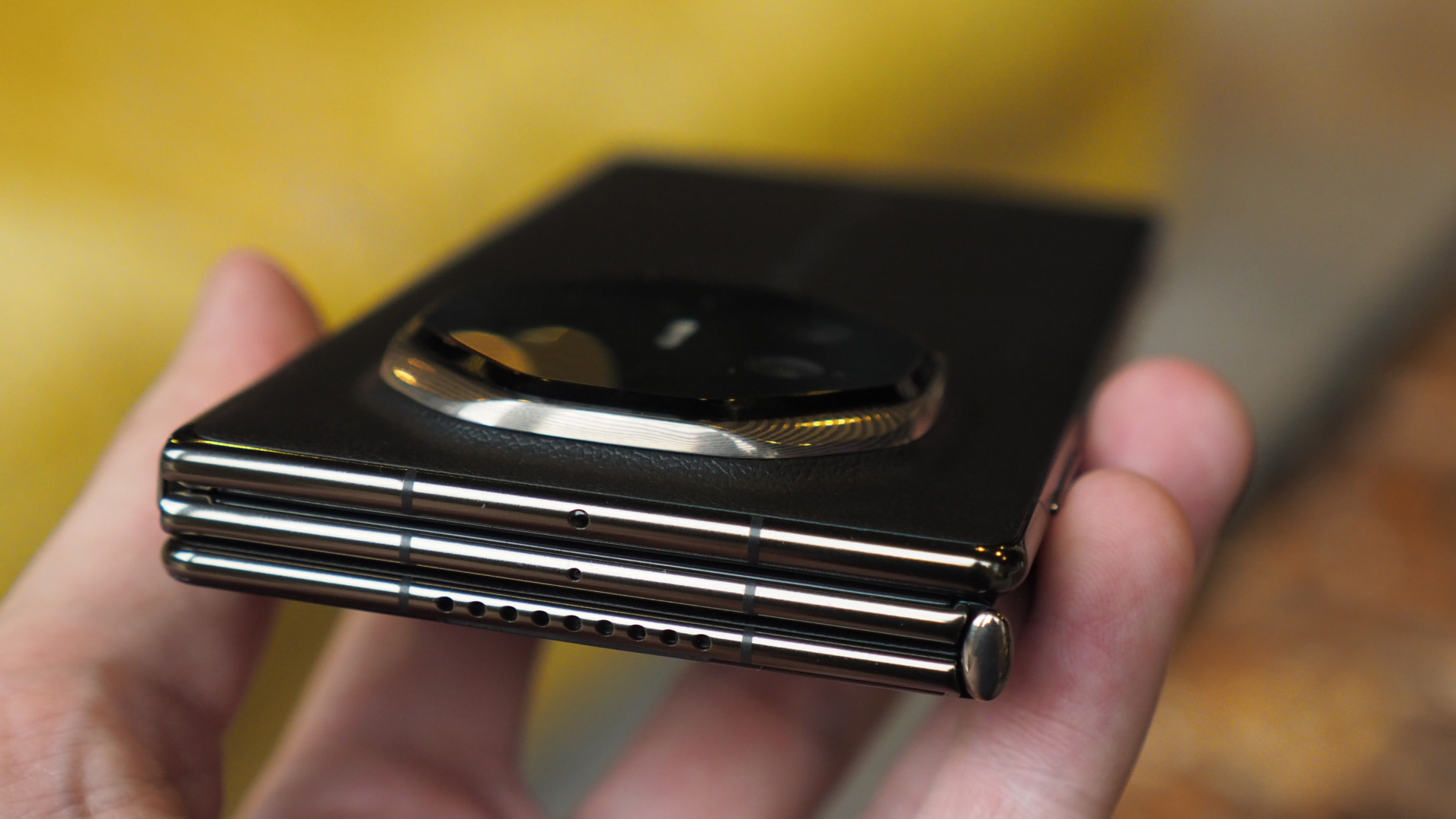
Far as I can recall, Huawei was the first phone-maker to put a silicon-carbon battery in one of it's phones. I know, battery technology is boring. But battery tech is also critically important – it's the number one consumer pain point when it comes to the best phones, as people want all this tech to last for seemingly forever on one charge.
Well, silicon-carbon is a step beyond lithium-ion for a number of reasons: one, the source material reduces the strain on over-mined lithium; two, it has a higher energy density, meaning it can be physically smaller; three, it delivers a longer overall lifespan; and four, there's even faster-charging potential, if utilised by manufacturers (here it's a reasonable 66W wired – far speedier than the Samsung Z Fold 6's 25W equivalent).
Huawei isn't discussing the battery capacity, but sources suggest that it has squeezed a 5600mAh battery into the Mate XT. That blows my mind, because this isn't a big device by any stretch of the imagination – it's 12.8mm thick when folded up, which is barely any different to my Google foldable, with that battery capacity surely divided into sections to make it feasible to fit into such a form-factor. Silicon-carbon is largely untapped elsewhere, but has clear user benefits.
4. Not compromising on cameras
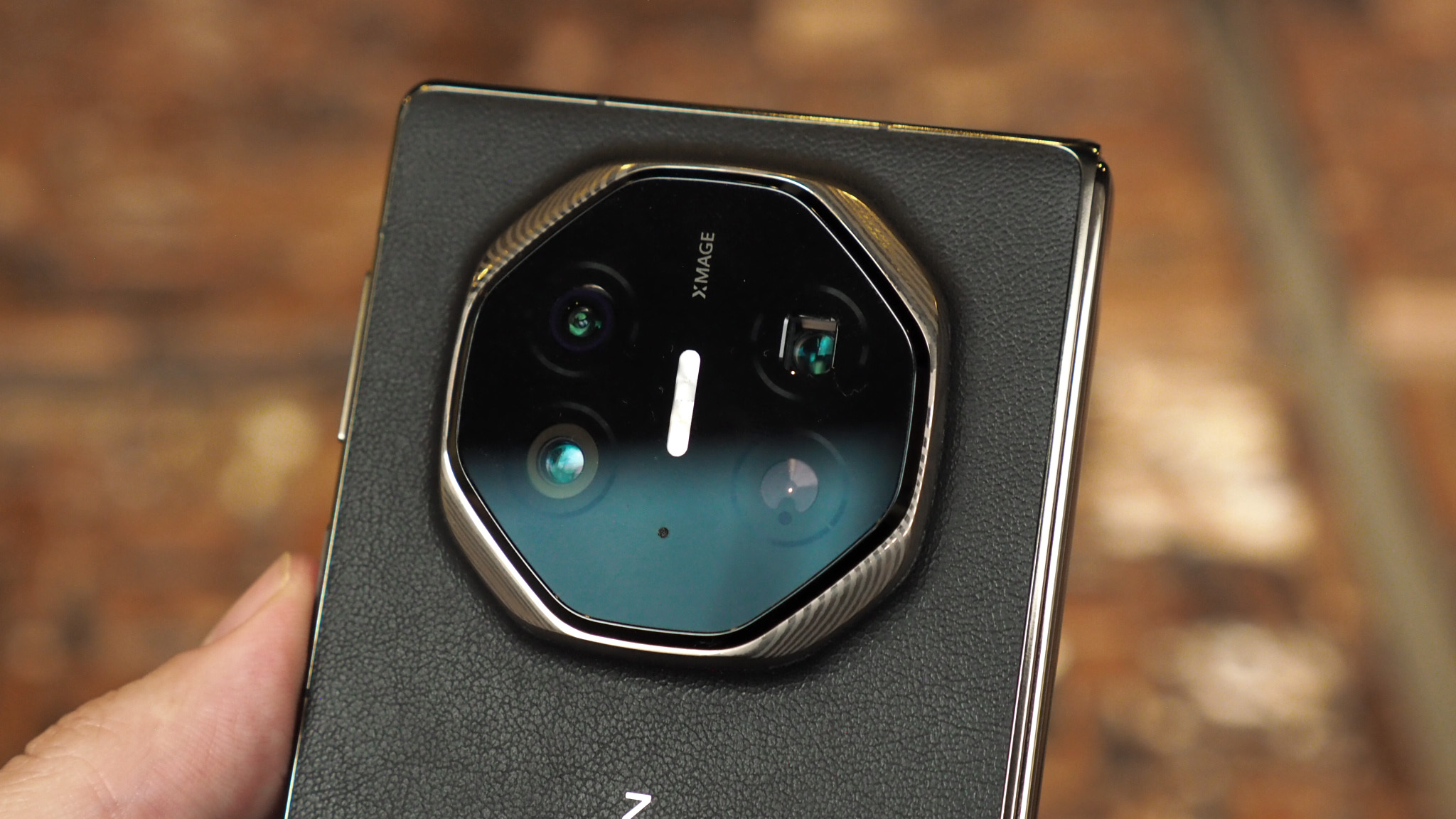
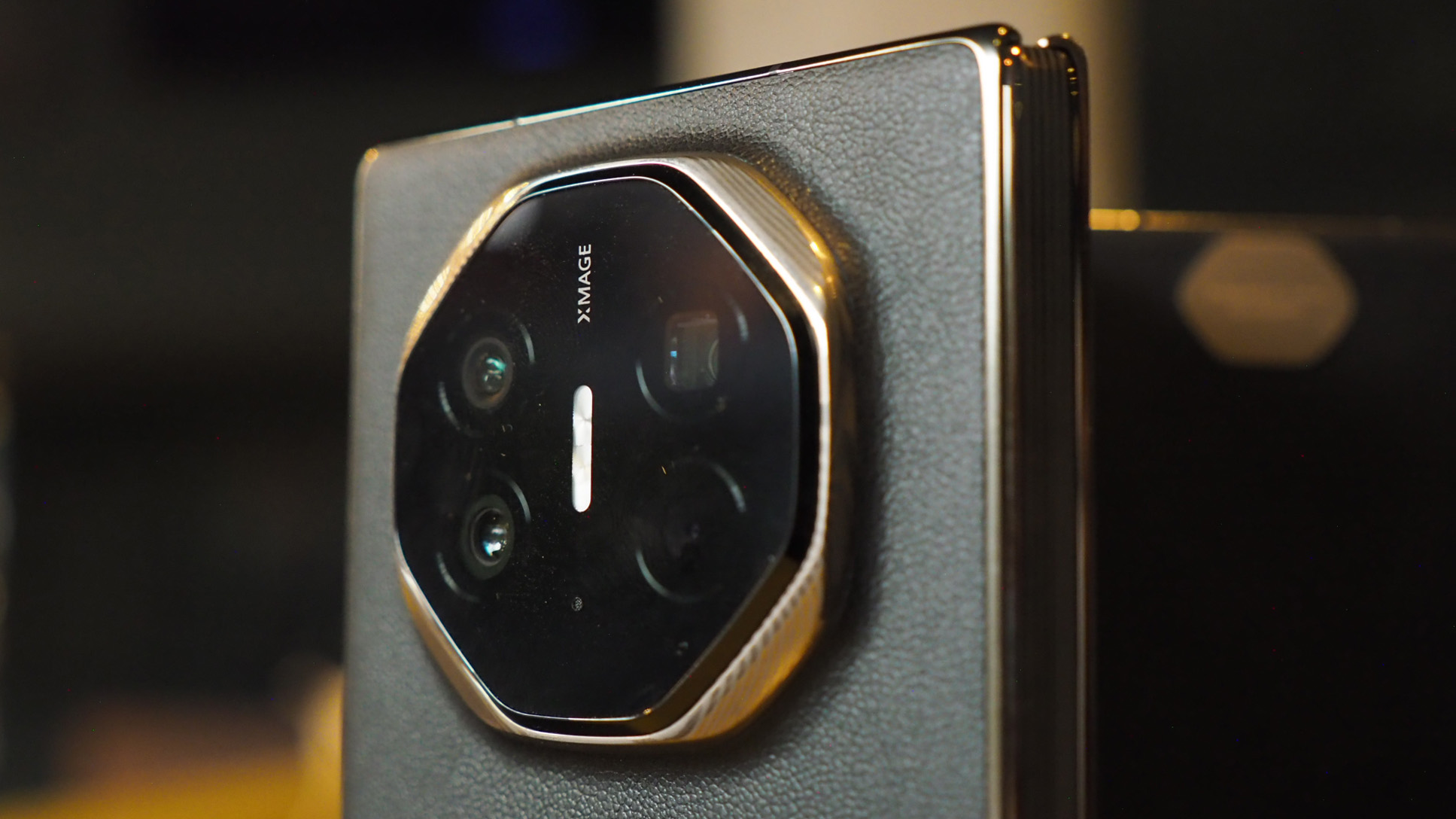

I was a little sceptical of such a large camera bump on the rear of the Mate XT, and I'm not sure that octagonal design is the one for me either. But I'm of the view that just because a phone folds, doesn't mean it should compromise on its camera setup. And with Google's Pixel 9 Pro Fold not upgrading the cameras over the original Pixel Fold, I think most foldable phone-makers have room for improvement here.
Huawei has quietly been making leaps forward in camera technologies over the years. I remember using the Huawei P30 Pro, which was a revelation in night shooting when it first launched five years back in 2019. That was thanks to new sensor technology, which the brand has continued to further develop. Other technologies, such as variable aperture, have also made it into Huawei's line-up – which also features here in the Mate XT.
I've only had a short time thumbing around the Mate XT's camera offering, but I'm pleased to see its triple camera setup delivering a 50-megapixel main (with optical stabilisation and f/1.4-4.0 variable aperture), a 3x optical zoom (also with stabilisation) and an ultra-wide lens too. There's also no under-display camera interrupting the screen's visuals, which I also think is the right move.
5. But it's pricey and software limited
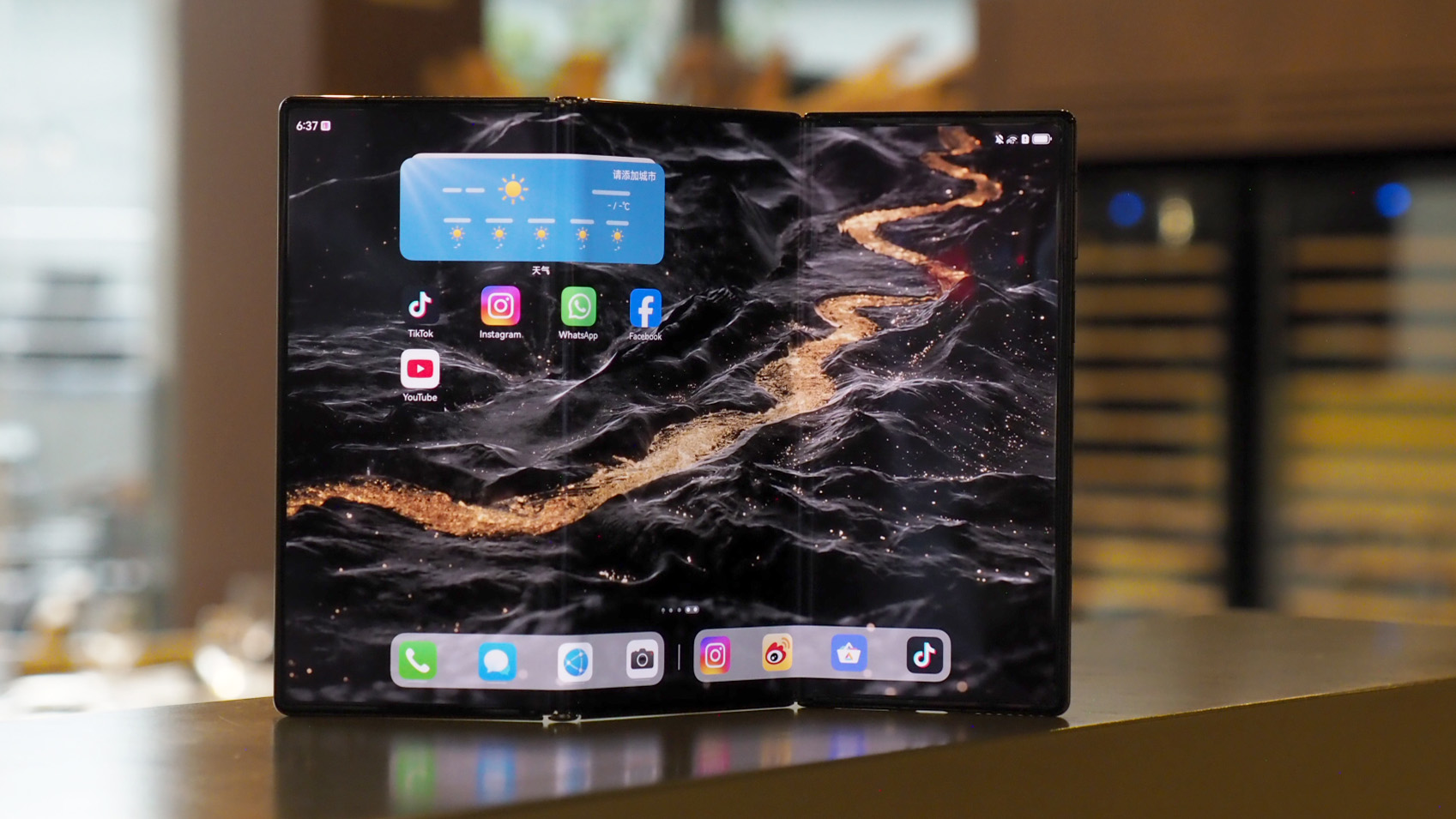
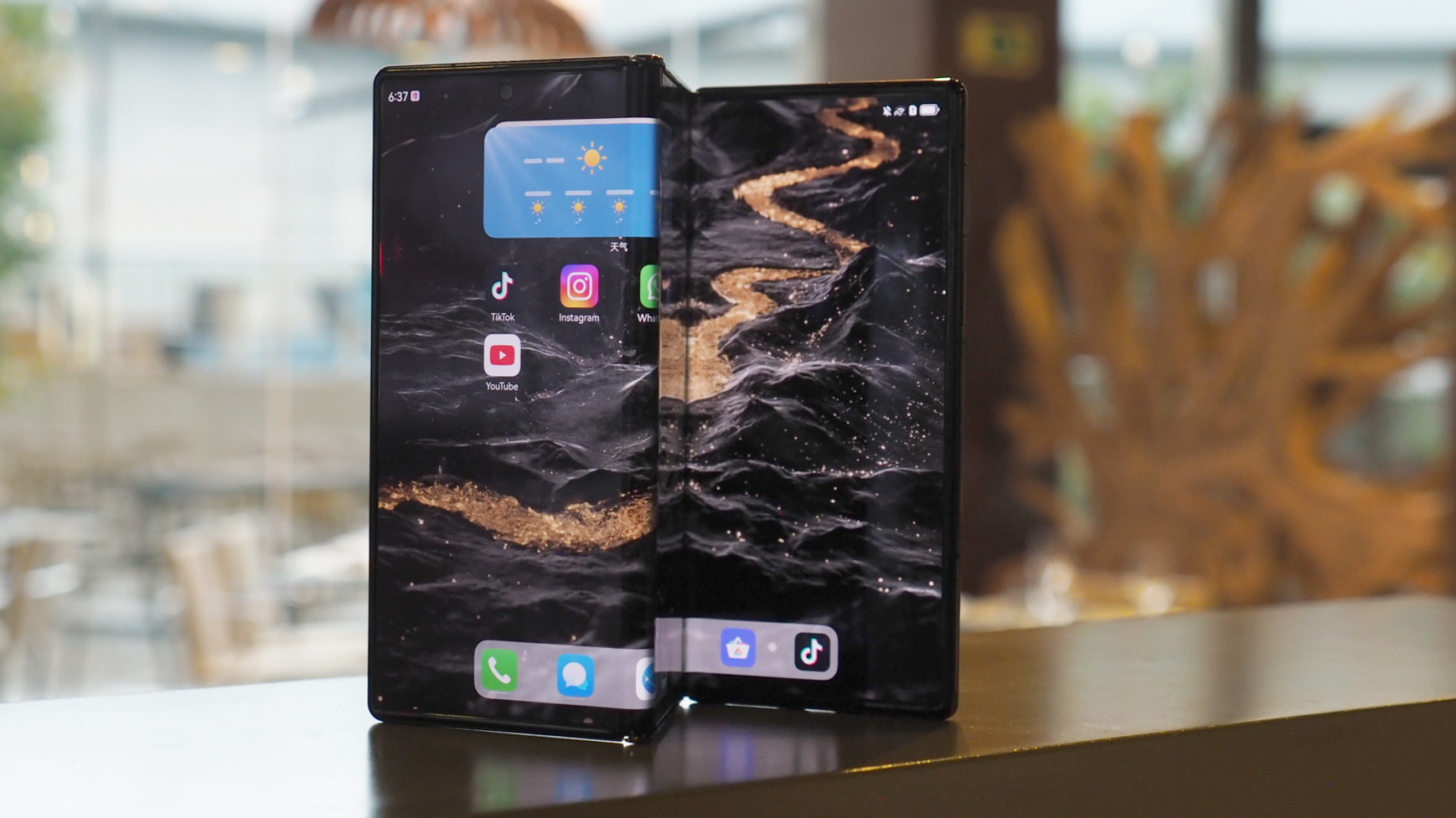
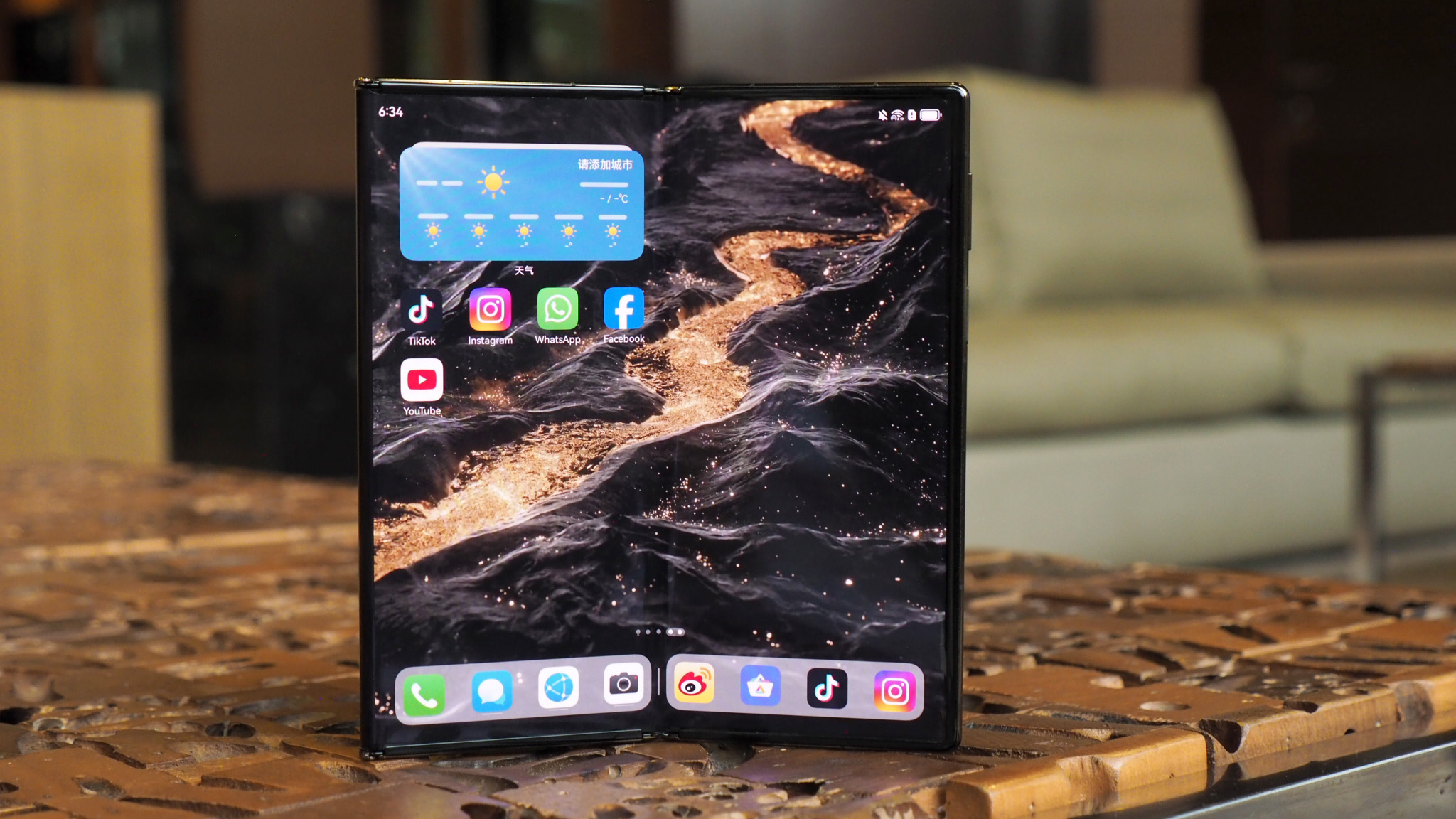
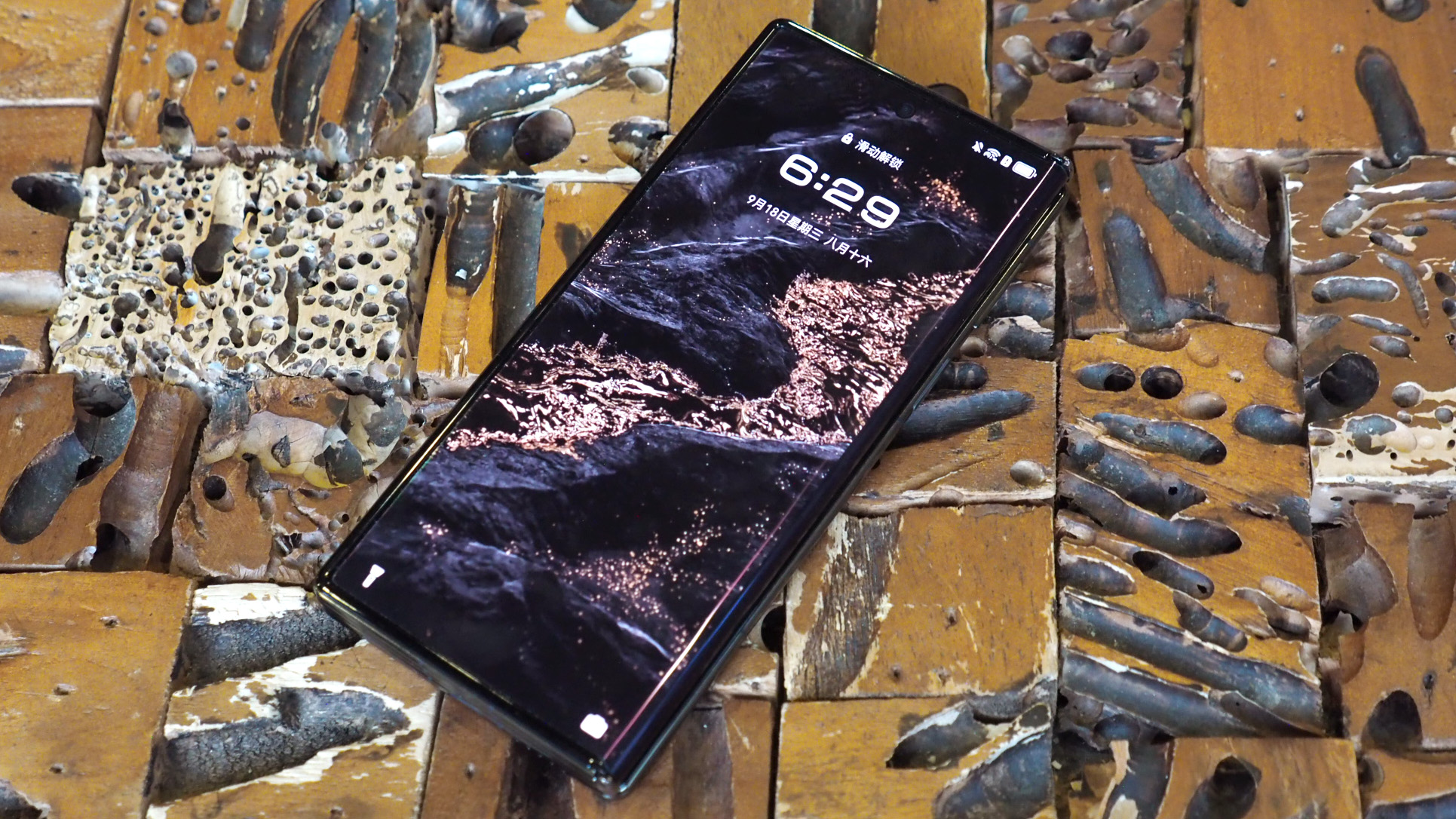
So I'm painting a positive overall picture of Huawei's tri-fold phone, but that's because the Mate XT is truly impressive for so many reasons. It's also truly expensive – but just because it costs as much as a MacBook Pro 16-inch doesn't mean it won't deliver value to certain users. That's fairly specific, though, with a China-only launch for now and Huawei's HarmonyOS (rather than full Google Android with Play Store) on board.
The official price is CNY ¥19,999 in China, where the device has officially been revealed, which by conversion is around £2,135/$2,835/AU$4,150. I stress by conversion, as I'm sure any taxes and such will only raise that asking price. Not that the Mate XT is confirmed for international launch yet (but is rumoured for 2025), though it'll never go on sale in the USA.
But the software and availability are by the by, really, as what I've taken away from seeing the Mate XT is just how far ahead the product design is. This is no concept phone, either, it's the real deal – and goes to show how far ahead Huawei is compared to its key rivals. That's great for innovation, it's great for competition – and this is surely just the beginning of where the future of folding phones heads from here.







